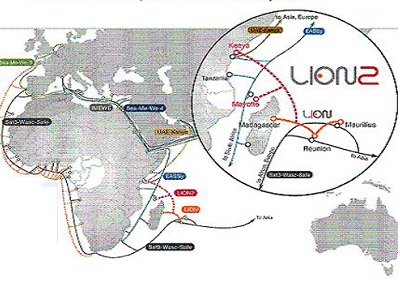
Photo Credit: The African
Smallholder farmers face agricultural productivity challenges in the areas of under-investment in R&D; the actual processes of agricultural research and communication; access and utilization of agricultural inputs such as seeds, fertilizer, agrochemicals, etc. by farmers; and accurate information on field production practices. On the other hand, success stories of the use of information and communication technologies (ICTs) to minimize each of these challenges are being documented across the globe and the potential for increasing the impact of ICTs on agricultural production is huge.
As the first in the 3-piece series on “Mapping ICT Solutions along the Agricultural Value Chain”, this post explains how ICT solutions are being used or can be used by value chain actors within the productivity segment of the value chain. ICT solutions in this category may support value chain actors who are involved in agricultural research and development, input manufacture and supply, extension, and production for increased access to information and knowledge for agricultural production.
Potential ICT Solutions for Agricultural Research and Development (R&D)
Agricultural R&D is a key component of the value chain and in most developing nations, has great limitation due to poor access to the global knowledge pool by the developing nations researchers. ICT solutions in this sub-category may support the work of agricultural researchers, agricultural science students, extension staffs, and farmers to facilitate access to scientific knowledge, exchange of information between and among them.
Examples of ICT solutions identified include mobile applications such as the i) OakMapper, a mobile application which allows users to submit occurrences of Sudden Oak Death (SOD), search for incidents, and to report them to the geospatial enabled database; ii) Rural Universe Network (RUNetwork), a network of several partners in the Caribbean to help improve the availability of local knowledge and information through the development of a rural communication system; iii) eRails, a free website for partners across Africa working in the area of agriculture and rural development to help them share their new innovations; iv) AGORA and TEEAL by FAO and Cornell University respectively helping to increase access of developing nations researchers and academics to scientific journals to facilitate their research work.

Photo Credit: Thulasy Balasubramaniam and Graham Lettner
Potential ICT Solutions for Access to Agricultural Inputs
Increased access to inputs such as seed, animal feed, fertilizer, machinery, financial support, insurance, and irrigation systems at the right time, the right price, and in the right amounts is key for successful production by farmers. Actors within this segment are mostly private sector and for-profit firms that need to be in constant communication with the smallholder farmers to ensure profitable investment. Communication tools are important for continuous flow of information between these partners to be able to develop the right input that works for the farmers. At the same time, input manufacturers and suppliers are expected to collaborate with researchers who test these inputs for their suitability for farmers to help in commercialization and scaling up promising agricultural technologies that could benefit smallholder farmers.
ICT solutions within this category may support activities of input manufacturers, suppliers, and users for timely, more efficient and effective use of these agricultural inputs. Some of the ICT applications identified include the use of i) E-Voucher system in Zambia to facilitate easy access to inputs by farmers, help involve the private sector, and reduce fraud in the delivery of these inputs; ii) the Agrian Mobile Information Center, a mobile app that allows users to access product information while in the field, search by product name, active ingredients, signal word, etc. and iii) Kilimo Salama, an input insurance system in Kenya for farmers as they purchase inputs for their farms.
Potential ICT Solutions for Agricultural Production
Apart from inputs and other new technologies from research, farmers put in a lot of resources and efforts into the actual production process on the field. Smallholder farmers across the globe are known for their innovative activities in the face of limited access to scientific knowledge and resources for production. Information communication technologies can play significant role in either way – connecting them to scientific resources and information and also link these farmers together to share their indigenous knowledge and experiences acquired over the years. ICT solutions in this sub-category may help in communicating information to support field activities by farmers such as weather, pest and diseases, soil nutrient levels, harvesting practices, gestation cycles, and knowledge sharing among farming communities.

Photo Credit: FAO
Some of the tools identified within this group include i) Crop Calendar, an online resource created by the Food and Agriculture Organization (FAO), which provides timely information about seeds to promote local crop production by farmers; ii) iCow, a voice-based mobile application that prompts cattle farmers on vital days of cows gestation period; iii) NEXT2, a geo-social application that is able to connect farmers with similar interest that are geographically co-located through SMS, voice, or mobile web to share local knowledge, expertise and experiences; and iv) a host of traditional radio programs that are assisting farmers’ production activities.
In concluding this piece, it is clear that the huge potential of the new digital network for agricultural productivity is yet to be fully exploited for smallholder farmers. The technologies are affecting the work of agricultural researchers, extension workers, input manufacturers and distributors, private sector organizations interested in partnering with governments to improve agriculture, and some farmers at the remotest communities. But stakeholders need to devise better strategies for fully integrating these solutions into their projects.
This is the first in a 3-part series that explains the role of ICTs within the three major stages of the agricultural value chain – Productivity, Marketing, & Monitoring and Evaluation. We’ll soon be launching a dynamic and interactive version of “Apps4Ag Database” project on March 9th during GBI’s TechTalk:Mapping ICTs Along the Ag Value Chain.


















































